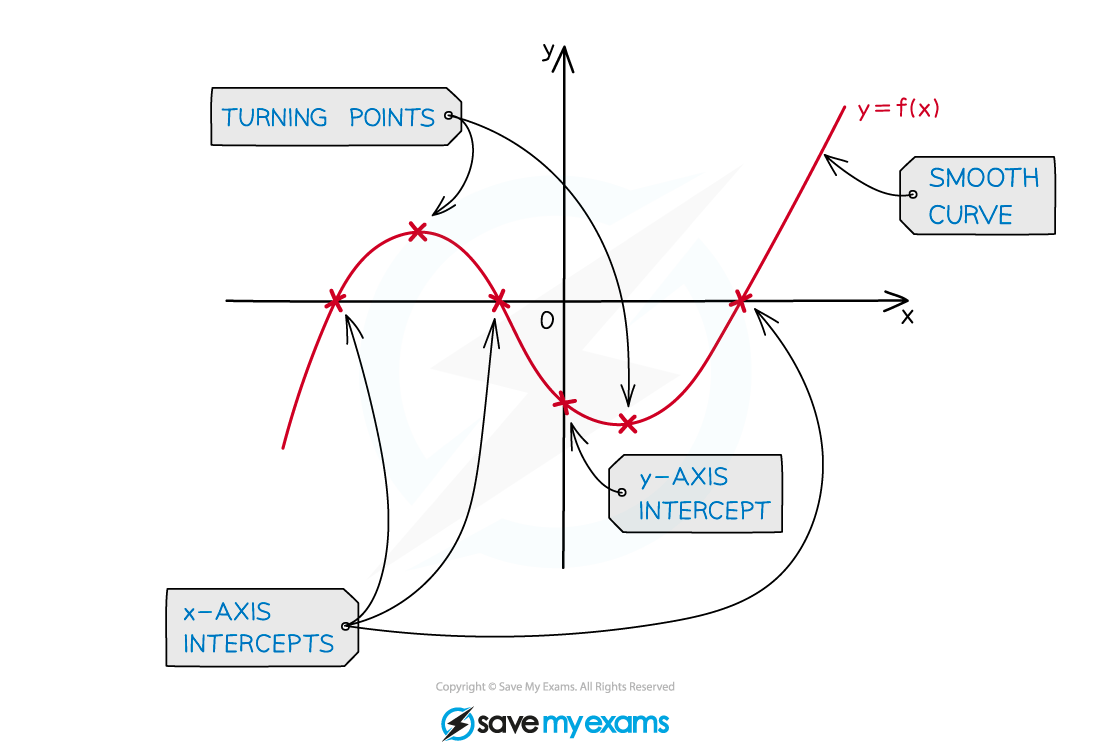Cubic Functions & Graphs (DP IB Applications & Interpretation (AI)): Revision Note
Did this video help you?
Cubic functions & graphs
What are the key features of cubic graphs?
A cubic graph is of the form
where
.
The value of
affects the shape of the curve
If
is positive the graph goes from bottom left to top right
If
is negative the graph goes from top left to bottom right
The y-intercept is at the point
The zeros or roots are the solutions to
These can be found using your GDC
These are also called the x-intercepts
There can be 1, 2 or 3 x-intercepts
There is always at least 1
There are either 0 or 2 local minimums/maximums
If there are 0 then the curve is monotonic
If there are 2 then one is a local minimum and one is a local maximum

Examiner Tips and Tricks
You can use your GDC to find the roots, the local maximum and local minimum of a cubic function.
When drawing/sketching the graph of a cubic function be sure to label all the key features
and
axes intercepts
the local maximum point
the local minimum point
Worked Example
Sketch the graph .
Answer:


Unlock more, it's free!
Did this page help you?